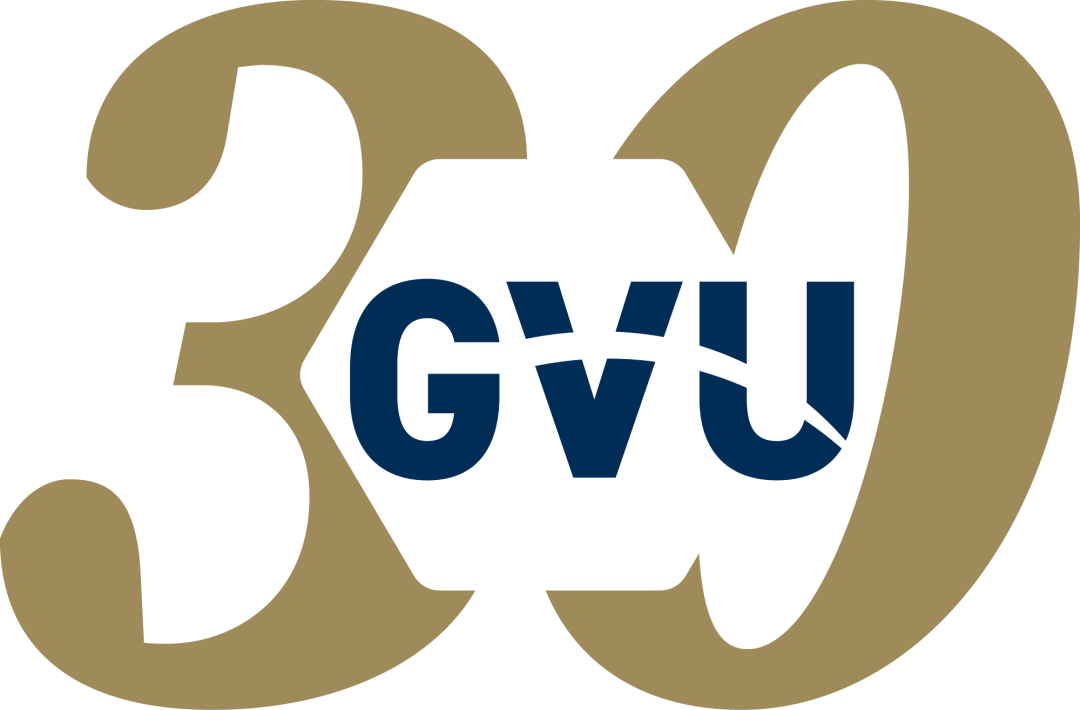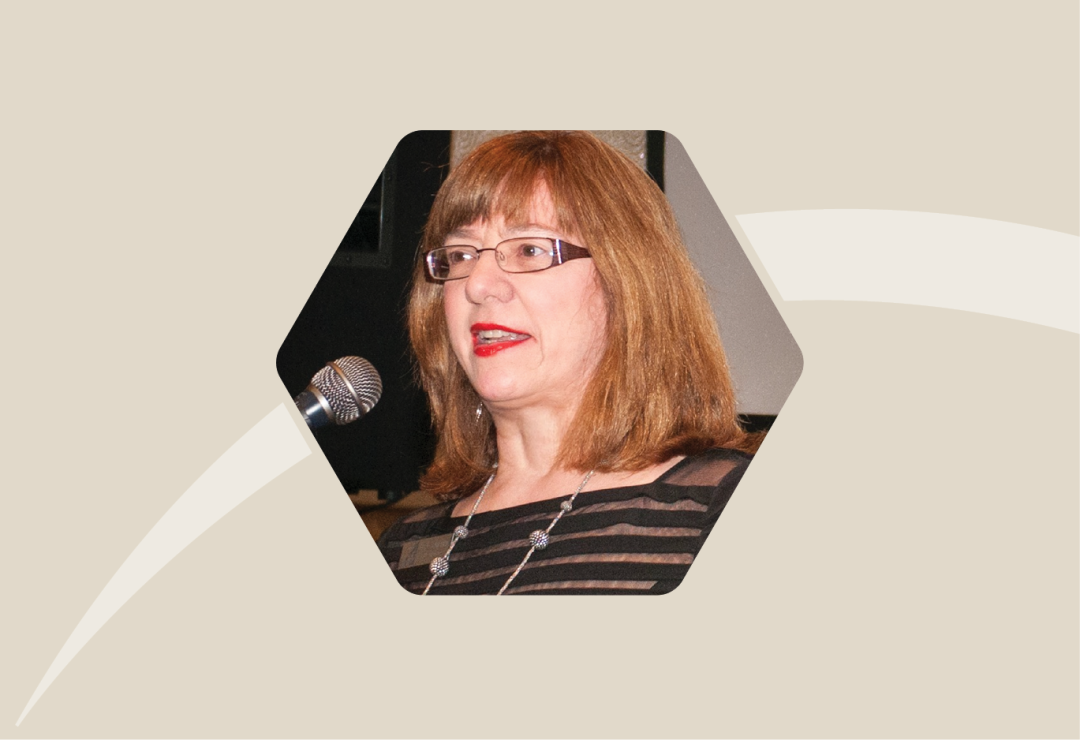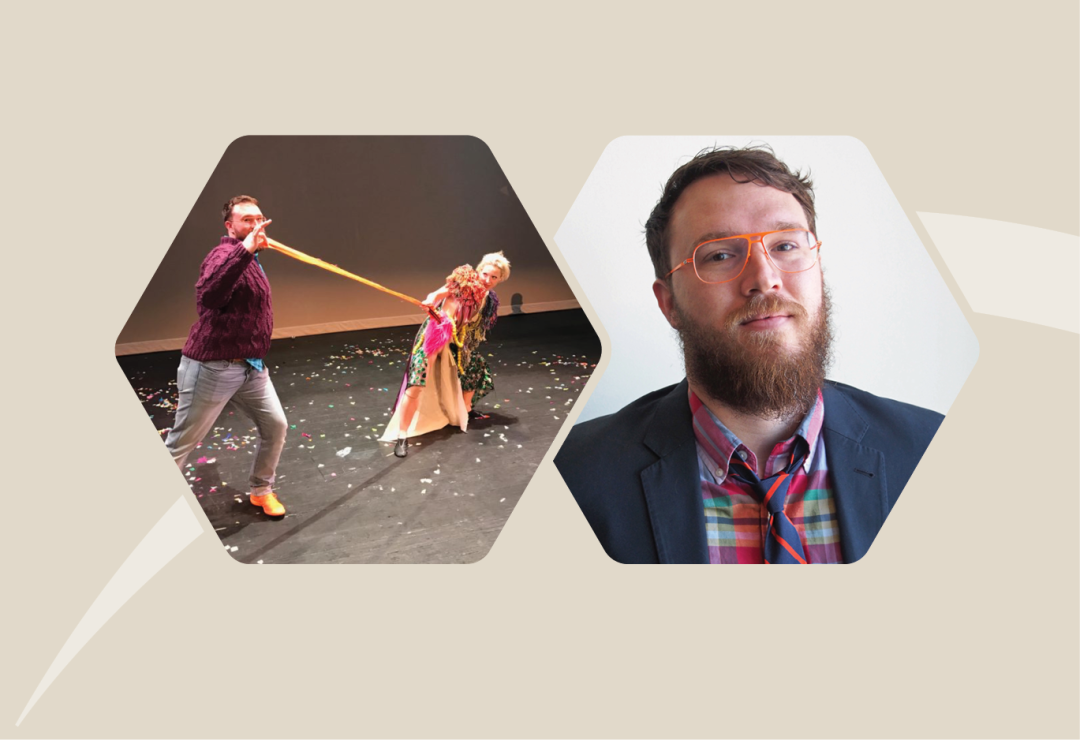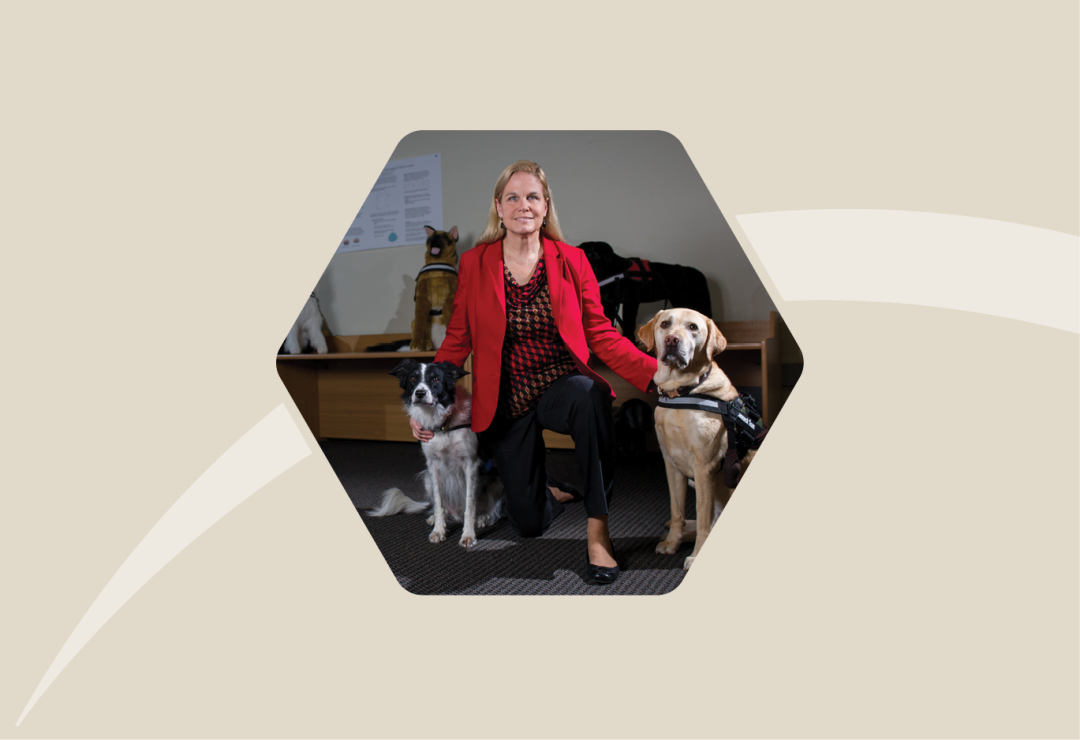Celebrating 30 Years of IMPACT
 The Georgia Tech GVU Center is a university-wide interdisciplinary research center dedicated to improving the human condition through technology. Founded in 1992 as the Graphics, Visualization, and Usability Center, GVU has grown to include over 100 faculty and almost 400 students who span all six colleges at Georgia Tech. Together, this group brings together deep insight into human behavior, culture, and abilities, coupling it with the technological innovation and creativity to imagine, design, and build the future.
The Georgia Tech GVU Center is a university-wide interdisciplinary research center dedicated to improving the human condition through technology. Founded in 1992 as the Graphics, Visualization, and Usability Center, GVU has grown to include over 100 faculty and almost 400 students who span all six colleges at Georgia Tech. Together, this group brings together deep insight into human behavior, culture, and abilities, coupling it with the technological innovation and creativity to imagine, design, and build the future.
Building on this 30-year heritage, GVU has established itself as one of the U.S.’s preeminent academic research centers. As computing technology weaves its way through our society, GVU’s focus areas have extended far beyond the original graphics, visualization, and usability, to encompass virtually every facet of the human use of interactive technology, including augmented reality, digital civic engagement, collaborative work, educational technologies, digital media, gaming, health informatics, technology for international development, mobile and ubiquitous computing, music technology, social computing, and more.
In 2007, GVU launched the Impact Awards to recognize individuals who have been instrumental in building a deeper understanding of human perspectives on technology, in envisioning and creating the technological landscape of the future, or in shaping and supporting our community. The Impact Awards were presented again in 2012 and in 2017. This year, to commemorate the 30th anniversary of the founding of the GVU Center, we are again honoring and celebrating the contributions of a handful of passionate, skillful, and committed individuals. Each of the individuals featured in this booklet embodies the interdisciplinary mindset and real-world impact that is a hallmark of GVU.
It’s my great honor to recognize and thank each of our Impact Award winners for their contributions and accomplishments; I look forward to seeing their stories inspire new generations of the GVU community.
Keith Edwards, GVU Director

GVU Impact Award Recipients

Laurie Baird
Laurie Baird is visionary technology entrepreneur, strategist, and product leader, as well as a longtime friend and advisor to the GVU Center. Her career has spanned the telecommunications and entertainment industries, with roles in over a dozen companies ranging from well established market leaders to small startups. She has served as Product Director at BellSouth, a Media and Entertainment Strategist at EPSN, a Research Fellow and Executive Board Member for the Futures of Entertainment consortium, Managing Director at You.i TV, and many other roles.
As Director of Technology Partnerships for Turner Broadcasting, Laurie served as a conduit between GVU research and Turner for many years, and grew her connections to Georgia Tech as an Executive in Residence at the Institute for People and Technology. In these roles, she facilitated joint projects between Georgia Tech faculty and students with leaders inside Turner Broadcasting.
Laurie’s devotion to mentoring and civic engagement is notable as well. She served as the President of the Southeast Chapter of Women in Cable Telecommunications (WICT), and worked to build partnerships and programs between GVU faculty and students and WICT. She also managed the development of an innovative Augmented Reality application for civic engagement as a part of Midtown Buzz, a partnership between Georgia Tech and the Midtown Alliance.
She has been a member of the GVU Advisory Board since its founding, and has been extremely active in that role, helping to guide the Center’s leadership and build bridges to industry and non-profit groups.

Clint Zeagler
While teaching textiles and fashion design studio classes at the Savannah College of Art & Design, Clint Zeagler realized that his true passion was in bridging the gap between the diverse disciplines of Fashion Design and Human-Centered Computing.
Clint has realized that passion through his research and teaching on electronic textiles and on-body interfaces, areas that demand not only technological innovation but also creative sensibilities around design and artistic expression. Clint has been at the forefront of these areas, helping lead partnerships with Google, NASA, the Atlanta Braves and more. He’s been a leader within GVU for over 15 years.
Beyond just research excellence, Clint has had great impact through his outreach to educators and the public. Clint was one of the creators of the Electronic Textile Interface Swatch Book, a tool to help facilitate interactions between the skill and craft-based design disciplines such as fashion, and technical disciplines such as computer science and electrical engineering. Clint led a series of National Endowment for the Arts-funded workshops at colleges across the US.
Clint led the creation of a special exhibit on the history of wearable computing that has been seen by thousands at the Computer History Museum, the Museum of Design Atlanta, and other venues around the world. His work has explored the use of electronic textiles in artistic expression as well, including co-designing music performance systems and interactive electronic costumes for live stage performances.
Five years ago, at the 25th anniversary celebration of GVU, Clint led the development of an installation called Nostalgic Futures, which reflected on and celebrated the history of GVU research. This installation later was later further developed and expanded into the “Tire Tracks” report that showed how early investments in academic research translate into economic impact.
A Foley Scholars winner and graduate of Georgia Tech’s Human-Centered Computing Ph.D. program, Clint is an embodiment not only of the interdisciplinary spirit of collaboration that GVU fosters, but also the impacts that we aim to have.

Matt Sanders and Russ Clark
Matt Sanders and Russ Clark are instrumental in supporting the research enterprise at GVU and the Institute for People and Technology, as well as accomplished researchers. Matt and Russ co-direct Georgia Tech’s Research Network Operations Center, a unique campus resource that makes Georgia Tech’s extensive network available as a site for research by faculty and students.
This includes not only the technical infrastructure but also the community infrastructure. Both Matt and Russ have been instrumental in creating partnerships with industry and community organizations, and are the principal leaders of Georgia Tech’s Convergence Innovation Competition, a unique program that leads students through the process of creating viable product prototypes in conjunction with industry partners. The RNOC lending library, which loans mobile technologies to students engaged in research and innovation activities, grew out of these community efforts.
Both Matt and Russ wear many hats. They are experts in computer networking, and work to ensure that the campus network remains at the forefront of Internet and IoT research. Matt also serves as the Director of Research Operations for IPaT, where he leads the development of lab infrastructure, both physical and virtual, for the researchers across Georgia Tech. Russ maintains an extensive research portfolio, most notably his work in Savannah with IoT-based sea-level sensing.

Carrie Bruce and Dick Henneman
Drs. Carrie Bruce and Dick Henneman are the leaders of Georgia Tech’s Masters in Human-Computer Interaction (HCI) program, a unique interdisciplinary program that brings together the schools of Interactive Computing, Psychology, Industrial Design, and Literature, Media, and Communication.
Carrie, as the program’s Research Director, has made substantial contributions to the program’s reputation in academia and industry. Through her teaching, she develops the UX leaders of the future and is a role model for advocating for accessibility and inclusive design.
Dick, as the Program Director, does an outstanding job of building a close-knit community of current students, alumni, faculty, and industry partners. He’s also a champion of diversity, equity, and inclusion in the program.
Together Carrie and Dick not just led, but have grown the program dramatically while maintaining its high standards. For example, in the year before they began their leadership there were 25 Spring graduates from the program. In Spring 2023 there will be 65. Applications increased from approximately 375 for Fall 2014 to over 1000 for Fall 2022, an indicator that the reputation of the program continues its stellar rise.
This unique program is essential to the GVU Center, and to the Schools here that participate in it. Together, Carrie and Dick have ensured that the program maintains its position as one of the top ranked HCI programs in the entirety of the US. Their dedication to the students and commitment to standards of excellence is unmatched. GVU and Georgia Tech owe much to their leadership over the last 7+ years.

Heather Pritchett
Heather Pritchett is Technical Director at Walt Disney Animation Studios in Burbank, California. Heather says she didn’t plan on being with Walt Disney for over two decades. When she graduated with her Masters in Computer Science she just planned on working with some visual effects company. But after seeing The Lion King, and being impressed by the computer graphics in the film, she decided to join Disney.
During her time at the Studio she has worked on theme park projects, video games, shorts, live action films, and animated films, both hand drawn and digital, including many you and your family will have seen (such as Wreck It Ralph, Frozen, and many more, including Strange Worlds which is hitting theaters this fall).
She serves as a steward of Disney’s animation pipeline, developing the procedures and tools that allow the creation of assets and their movement between Story all the way through to Lighting. Heather is a frequent mentor to new hires, and also volunteers for organizations like Girls Who Code, PyLadies, and Django Girls.
Heather has a Bachelor of the Arts in Theater from UGA and a Masters in Computer Science from Georgia Tech. She was also one of the first students to work with the GVU Center upon its founding in 1992.

Neha Kumar
Neha Kumar is an Associate Professor in the Sam Nunn School of International Affairs, and has a joint appointment with the School of Interactive Computing. Neha has been critical in helping to bridge disparate fields including human-computer interaction, international affairs, and gender studies.
She’s been instrumental in helping to lead the application of human-centered computing to global development. For example, her work has impacted healthcare delivery and healthcare outcomes in frontline health work in low-resource parts of India. Other common themes of her work include focusing on women’s wellbeing, fostering community knowledge networks in under-resourced parts of India, addressing mental health challenges through technology, and critiquing the role of AI toward vocational or “gig” work. She brings a unique perspective to her work, being trained in computer science, design, and ethnography.
Neha is passionate about community building: she’s a champion for work at the intersection of global development and computing, not only within the GVU community and across campus, but nationally and internationally as well. In 2015 she co-founded HCI Across Borders, aimed at promoting cross-border collaboration in HCI. Most recently, she serves as the President of SIGCHI, the largest and most important professional organization for research in human-computing interaction, with worldwide reach, where she is focused on maximizing the impact of computing.

Ashok Goel
Ashok Goel is a world leader in Cognitive Systems, a field that sits at the intersection of artificial intelligence and cognitive science. Ashok has made seminal contributions to the field that have impacted the world far beyond Georgia Tech, but that have also changed the way we teach here.
For example, his work on computational design and creativity looked at how acomputational systems could draw lessons from nature to inspire new design thinking in humans, such as drawing analogies from biological systems in nature. Over the last decade or so, much of Ashok’s research has focused on human learning and education, and in 2014 he developed a popular online course in Knowledge-Based AI taught here at Georgia Tech; building on that experience in 2016 he created Jill Watson, a virtual teaching assistant capable of answering common questions from students’ in online discussions.
Ashok has been recognized nationally and internationally for his accomplishments and his leadership. He was named the Association for the Advancement of AI (AAAI) Outstanding Educator Award in 2019, a Fellow of the AAAI in 2021, and a Fellow of the Cognitive Science Society in 2022.
Not content with laurels, Ashok led the creation of the National AI Institute for Adult Learning and Online Education, launched in July 2021 by the National Science Foundation. This institute will ensure that research innovations, such that those that led to Jill Watson, are translated to new approaches to adult learning and retraining.

Melody Moore Jackson
Not many people can say they’ve been instrumental in catalyzing two separate and very distinct fields, but Melody Moore Jackson is one such person.
Melody was an early pioneer in the field of Brain-Computer Interfaces, the idea of being able to control a computer directly from detected brain signals. This research is potentially life changing, especially for those who suffer from conditions such as ALS that result in very limited motor ability. Melody’s group was the first to design and evaluate an invasive implant to register brain activity in locked-in patients, before later moving to non-invasive approaches. Melody’s work led to the creation of new interaction techniques that allow patients to communicate using only brain signals.
Melody’s more recent work is in the field of Animal Computer Interaction, a field she essentially invented and continues to help lead. As an example of her creativity, Melody realized from her own work as a service dog trainer that such dogs often know much more than they can easily communicate. From this insight, Melody led the creation of a number of wearable computing devices for service dogs that allow them to communicate in new ways with their handlers — a bomb sniffing dog might be able to detect the exact chemical composition of an explosive, for instance, and radio this back to a handler through interactions done by the animal on a service vest. Melody’s innovations have been adopted by service animal organizations across the country, as well as those who work with service animals.
Animal Computer Interaction has rapidly crystalized as its own field, with the ACI Conference which Melody helped to found now in its ninth year. Melody continues to be at its forefront. She’s a powerful exemplar of the importance of work that sits in the spaces between established disciplines.


